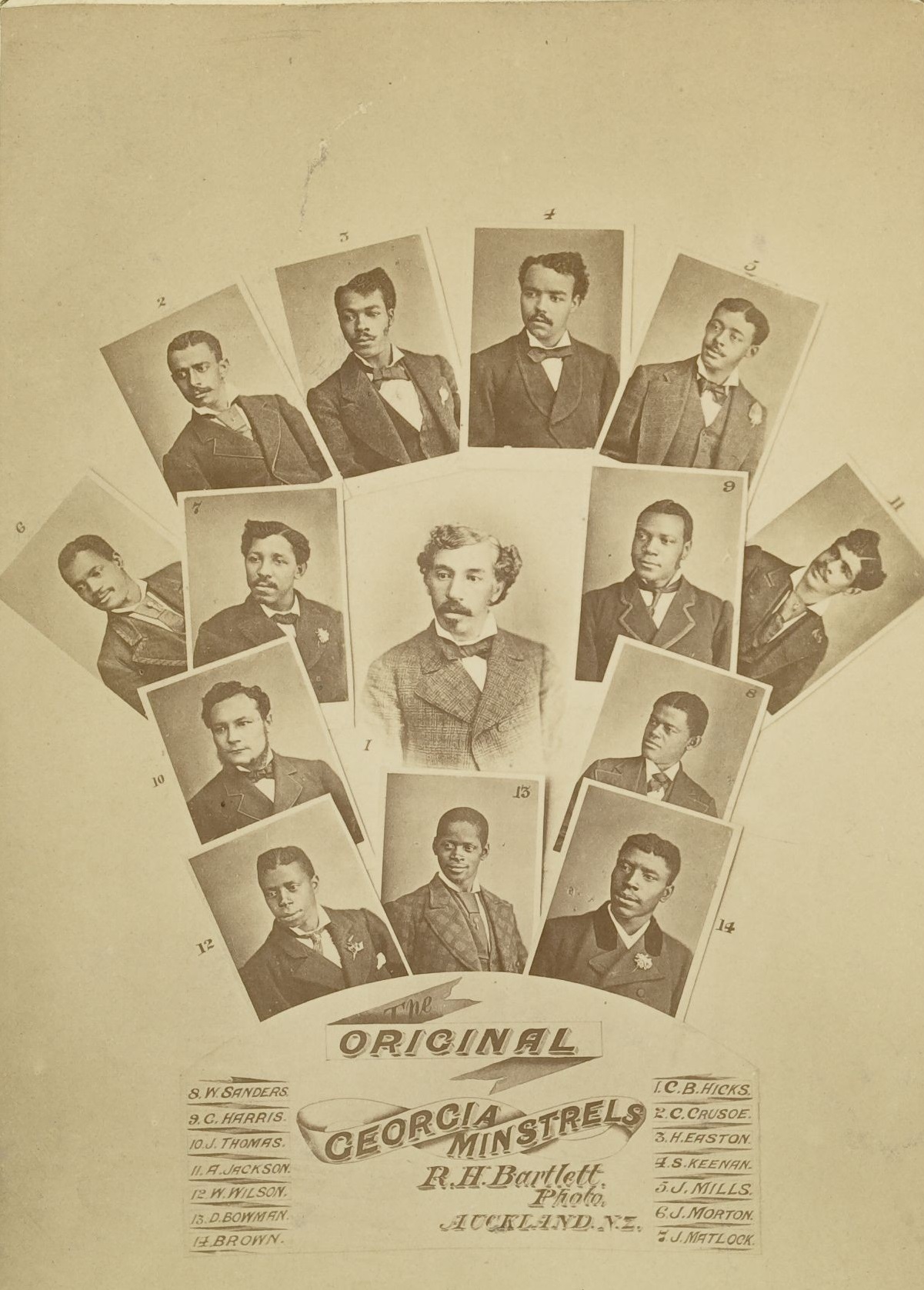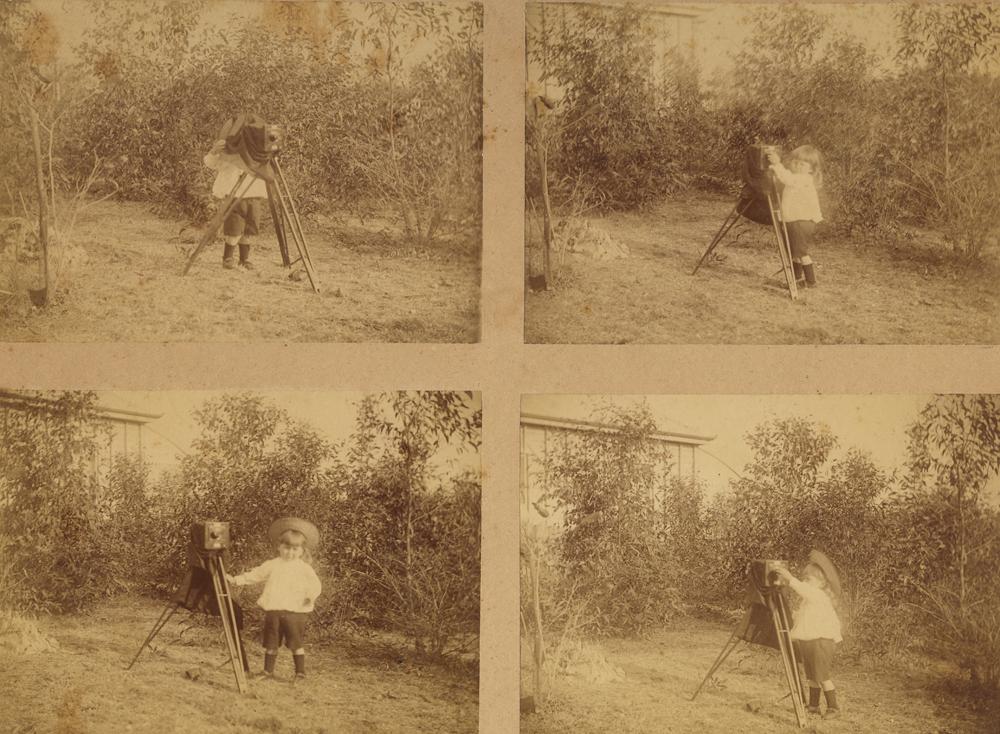All the world’s a stage
Actors and performers buried in Toowong Cemetery
Use the Toowong Cemetery map to help you visit the graves in this story. Click the grave location (portion‑section‑grave) beside each person's name to view an aerial image of the grave.
Edward McGregor (4‑16‑17/18)
Edinburgh‑born Edward McGregor worked in the Queensland Railways for twenty years before purchasing the Grosvenor Hotel. A few years later he built the Lyceum Theatre, George Street, in 1909 which he ran until his death in 1939. McGregor spoke several languages and toured the world twice. He was a keen music lover and was patron of the Brisbane Municipal and Excelsior bands and Vice‑Patron of the Scottish and Curlew choirs.
Edward McGregor - The Telegraph, 4 Dec 1939. Edited.
The headstone of Edward McGregor and his wife, Mary Jane, shows Edward mourning the death of his wife who died 18 years before him.
Brisbane Municipal Concert Band marching in Brisbane, Queensland, 1909 - State Library of Queensland
Sidney Cook (4‑35‑14)
Ex‑Salvation Army Limelight cameraman, Sid Cook, worked extensively with Henry Mobsby. The Limelight Department formed Australia's first registered film production company producing commissioned work for external agencies. Sidney Cook, was the second camera operator. The Royal Visit to Australasia in mid‑1901 included some of Sidney Cook's first camerawork, his coverage of the future King George the Fifth ‑ laying the foundation stone of the Boer War monument in Ballarat on the 13th of May 1901. Sid Cook also filmed the Royal Couple's departure for Brisbane. They had been scheduled to go by sea, but an outbreak of bubonic plague in the Port of Brisbane changed their plans.
Sid Cook’s family was growing and in July 1905 he made a move from the meagre salary of a Salvation Army officer to become a commercial film showman. Based in Queensland, Cook became the most prolific Australian filmmaker of the Edwardian era. He hired Brisbane's His Majesty's Theatre for the Christmas season in 1906 and the program included his startling films of Brisbane’s main thoroughfares shot from a moving tram. In 1908 Cook took the film to London on behalf of the Queensland Government for screening at the Franco‑British Exhibition. Compiling it together with other Brisbane scenes, in 1911 Cook advertised it as part of his documentary Living Brisbane.
Sidney Cook next to the camera with a group of five women Sydney 1913 - State Library of Queensland.
Tasmania the Wonderland was probably filmed by Sidney and shows the last captive thylacine at the long-defunct Beaumaris Zoo in Hobart.
Samuel Keenan (2‑48‑7)
New York‑born Samuel Keenan, was an original member of the all African‑American minstrel troupe who toured extensively throughout New Zealand, Australia with the Original Georgia Minstrels, beginning 1877 through to mid 1880s and were managed by Charles B. Hicks. The Georgia Minstrels performed to packed houses around the colonies (Victoria, NSW, South Australia, Tasmania and Queensland) in halls and in legitimate theatres including Gaiety, Tivoli, St Georges Hall and Theatre Royal. They always drew loud applause, laughter and calls for encores.
Sam‘s name was familiar in all the principles theatres in Australia. He held a prominent place in numerous successful minstrel companies and in his particular line of entertainment he has probably never been equalled in Australia for the originality and humour of his portrayal of “negro minstrel” parts. Sam married a local girl Marian Collier and has an extremely proud extended family. Samuel Keenan died aged 40.
"Original Georgia Minstrels" composite image with founder Charles Hicks at center - State Library of Queensland
Henry William Mobsby (5‑61‑11)
Mosby was an artist, photographer and motion picture pioneer. He was born on 17 August 1860 at Hove, Sussex, son of William Mobsby, watchman, and his wife Sarah, née Humphrys. Henry trained in art, design, chemistry and commercial practice at the School of Arts, Brighton, and in London. In 1883 he accompanied artist Isaac Jenner to Queensland. Mobsby married Jenner's eldest daughter Mary Ellen on 10 September 1884 in Brisbane, and for some years taught decorative art at Brisbane Technical College.
Henry Mobsby and his wife Mary Ellen (Nellie) - very early 1900s.
By October 1899 Mobsby had produced some thirty, one‑minute films during various 'still' photography excursions around Queensland. Among the earliest was the arrival of Governor Lamington for the opening of parliament on 18 May 1899. Most of the films made by Mobsby were shot in the spring of 1899 and illustrated wheat harvesting on the Darling Downs, sugar harvesting at Nambour and aspects of stock management. These were the first Australian industrial documentary films and are among the world's earliest films of the type. Mobsby also filmed the Queensland cabinet boarding the government paddle steamer Lucinda for a ministerial banquet. Their last and most impressive films recorded Queensland troops bound for the South African War, the only known surviving footage of such departure shot in Brisbane between 28 and 31 October 1899.
Mobsby became official artist and photographer for the Department of Agriculture in 1904 and remained until his retirement in 1930. He had scant direct involvement in subsequent Queensland government film production, preferring to commission others, such as the Salvation Army’s former cameraman Sid Cook, to undertake the filmmaking. Mobsby's reputation stemmed from his scenic photography and exhibition design. A fellow of both the Royal Geographical Society and the Royal Society of Artists, London, he regularly designed and organised Queensland's exhibits for the annual shows in southern capitals and at the Royal National Exhibition in Brisbane. His photography gained international distinction, and he officially represented Queensland at numerous exhibitions.
In December 1905 Mobsby's 11‑year‑old son Arthur Timewell drowned; each year thereafter, the Mobsby memorial medal was awarded to the Indooroopilly State School student who achieved the highest percentage in the year 8 scholarship public examination. A keen Freemason, Mobsby was a member of the Lodge, Indooroopilly, No.155, United Grand Lodge of Queensland. He died on 9 April 1933 at his home in Station Road, Indooroopilly, and was buried with his son.
Karoly (Charles) Pulszky (5‑2‑3)
Charles was born in London on 10 November 1854, the son of politician and revolutionary Ferenc Pulsky, a member of a prominent Hungarian family. He was an urbane art collector who founded the Budapest Museum of Fine Arts. He married famous Ibsen‑exponent, actress Emilia Márkus.
Implicated in a politically‑motivated financial scandal, he went into a lonely exile after a trial in 1896. He shot himself at Myrltetown on 5 June 1899 having been in Queensland for about two months working as an AMP canvasser.
In 1913, while on a tour to South America, the world‑famous ballet dancer Vaslav Nijinsky impulsively married Charles' daughter, Romola Pulsky, who had pursued Vaslav throughout Europe.
The White Stag of Exile was written about Charles' life by Thomas Shapcott in 1984.
Thomas Macer (Megan) (21‑14‑3)
Thomas was an English music hall artist touring Australia when he died suddenly in Brisbane. Accompanied by his wife, he arrived in Sydney in 1924. He was buried 17 November 1926 aged 34 years.
Arthur Aldridge (23‑31‑14) and Kyrle Edward McAllister (Sylvaney) (23‑31‑15)
English‑born Arthur was a tenor who was a regular fixture on the Melbourne stage. Arthur was 57 when he died on 3 November 1929 in a motor accident together with variety artist Kyrle Sylvaney who was aged 33. Their headstone was erected as a token of affection by their friends and admirers.
He was born in 1873 in Walsall, Staffordshire. He was a saddlemaker and the story goes that his workmates heard him singing and said that if they could sing like that then they would never work again. He decided to try his fame and fortune by going to London and performing at the music halls The Pavilion and The Palace.
He was discovered by William Morris who suggested he go with him to New York. His wife did not want to go, but he went regardless! He sang Shubert‑Brady revivals on Broadway where he played many leading roles until 1915. He was with J. C. Williamson’s company and toured Australia. He came to Australia with Nell Flemming and played in The Follies.
The National Library of Australia has a collection of sheet music dedicated to him.
Acknowledgements
Written by Dr. Hilda Maclean
Sources
- Creswell, Jane Arthur Aldridge family history
- Gerard, Patrick Picturing Queensland: The Local, the National and the Global in Early Queensland Film, Griffith Film School, Keenan, Tracy Samuel Keenan family history
- Laughren, Pat Mobsby, Henry William (1860 - 1933), Australian Dictionary of Biography, Online Edition, Copyright 2006, updated continuously, ISSN 1833-7538, published by Australian National University







